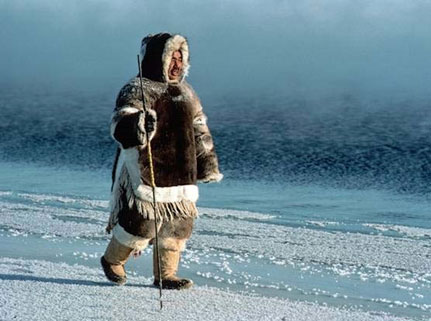 Learning about vitamin D from Rudolph Ballentine’s book Diet & Nutrition: A Holistic Approach has been fascinating. Especially how it relates to the colour of people’s skin.
Learning about vitamin D from Rudolph Ballentine’s book Diet & Nutrition: A Holistic Approach has been fascinating. Especially how it relates to the colour of people’s skin.
Vitamin D is absorbed from sunlight through the skin and then, through a chemical reaction, helps promote the absorption of calcium from the intestinal tract and bones. The body maintains blood calcium to form bones and teeth. Muscle fibers also depend on calcium to help them contract. And calcium plays a part in our nervous system. Without vitamin D, we’d have no calcium absorption.
What does that have to do with the colour of people’s skin?
 People living in hot climates, near the equator, have darker skin. Dark skin protects the deeper skin layers where the vitamin D chemical reaction occurs. The skin filters out the ultraviolet rays thus slowing the manufacture of vitamin D, reducing the risk of a vitamin D overdose.
People living in hot climates, near the equator, have darker skin. Dark skin protects the deeper skin layers where the vitamin D chemical reaction occurs. The skin filters out the ultraviolet rays thus slowing the manufacture of vitamin D, reducing the risk of a vitamin D overdose.
On the other hand, fair skinned people living more northerly, who don’t get the intense direct sunlight, need to absorb more sunlight to get enough vitamin D to help the body absorb calcium. This is accomplished with lighter skin allowing more ultraviolet light to be absorbed from sunlight.
The body can’t control the manufacture of vitamin D, which can cause toxicity issues. What happens if the body absorbs too much vitamin D?
- Calcium deposits can cause damage to the heart, blood vessels, and lungs.
- A person can develop nausea, vomiting, diarrhea, dizziness and weakness. Does this sound familiar? It’s commonly known as sunstroke or heatstroke.
If a fair skinned person from a northern cooler climate goes on vacation to a tropical destination, chances are they’ll develop a tan. A tan is the body’s way of protecting itself and slowing the absorption of too much vitamin D.
Inuit people living in the north have darker skin and live where there is not a lot of sun. Plus their bodies are almost fully covered, creating little space for sun to be absorbed. How is it possible that they get enough vitamin D?
 First of all, Inuit people are believed to be decedents of Mongolian populations that migrated to North America. This population naturally has darker skin. And second, vitamin D can also be sourced from fish (especially fish liver) that eat plankton. Inuit people eat a diet high in fish so they ingest sufficient amounts of their vitamin D through their diet.
First of all, Inuit people are believed to be decedents of Mongolian populations that migrated to North America. This population naturally has darker skin. And second, vitamin D can also be sourced from fish (especially fish liver) that eat plankton. Inuit people eat a diet high in fish so they ingest sufficient amounts of their vitamin D through their diet.
What happens if someone doesn’t get enough vitamin D?
People from hot climates that move to cooler northern climates can suffer from lack of absorbing enough vitamin D from sunlight.
Women who wear a burka, a cloak type cover that extends from head to foot, can sometimes develop issues with brittle bones from lack of exposure to the sun.
A lack of vitamin D can cause a disease called rickets to form. Bones don’t grow properly without sufficient amounts of calcium. They become deformed. Caught in early years it may be reversed with adequate dosages of vitamin D.
Even animals and birds that have thick fur or plumage need their vitamin D. One theory is that preening may not be for cosmetic purposes in animals as much as it may be nutritional. Perhaps by preening, the animals ingest the oils on their fur or feathers, and that oil has absorbed the vitamin D from the sun.
Be sure to take a walk and soak up some rays today… but not too much! 😀
One Comment Add yours